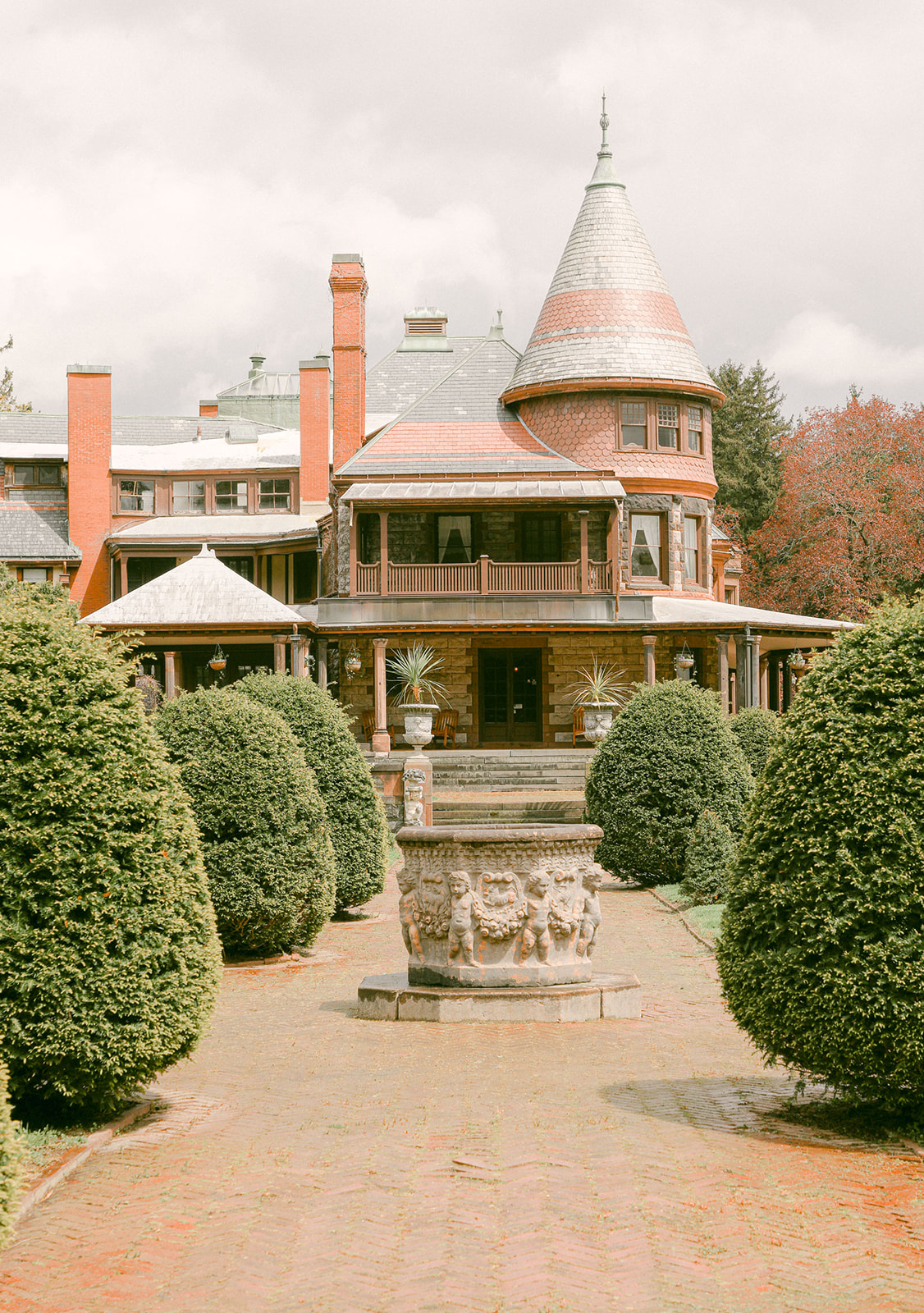Historical Perspective on Sonnenberg
Today, Sonnenberg Gardens is a New York State Historic Park where a late nineteenth century Victorian Estate with a Queen Anne-style mansion and nine formal gardens of the world is being preserved. This 50-acre estate is one of just two public gardens in the NYS Parks system. Sonnenberg is known for its distinctive period architecture, statuary, formal gardens, fountains and unique garden structures.
Sonnenberg is the former summer home and creation of Frederick Ferris and Mary Clark Thompson. He was a New York City banker, and she was the daughter of a New York State governor. As newlyweds in 1863, the Thompson’s purchased a 300-acre farmstead named Sonnenberg (Sunny Hill) near Canandaigua Lake for their summer estate. By 1887, they replaced the previous farmstead residence with the current Sonnenberg Mansion.
Mr. Thompson died in 1899 and in 1902, Mrs. Thompson began re-designing, renovating, and building the diverse gardens surrounding the mansion as a living memorial to her husband. Like many affluent gardeners of the era, she had the means to travel the world to visit famous gardens. She visited medieval walled gardens, grand and formal Italian Renaissance gardens, old-fashioned flower and rose gardens, English landscape gardens with sweeping lawns and striking vistas, classic Japanese gardens, and fashionable Victorian rock gardens. Through blending these different landscape styles, Mrs. Thompson created Sonnenberg’s unique gardens between 1902 and 1919.
After Mrs. Thompson’s death in 1923, the site passed into the hands of her oldest nephew, Emory Clark, who ultimately sold the property in 1931 to the federal government, which built a VA Hospital complex on most of the farm acreage surrounding the formal Mansion and garden estate. Although patients and staff tried to maintain the gardens, 40 years of neglect and vandalism took its toll.
In 1966, a local citizen’s movement begun to purchase, preserve, and restore a 50-acre portion of the original estate and gardens, including the Mansion and greenhouse complex. In 1972, a formal bill transferring the estate from the VA to Sonnenberg Gardens, a not-for-profit organization, was passed and signed into law.
Formal restoration began in 1973. Buried gardens and fountains were mapped out, relocated, and excavated. Boarded-up and divided mansion rooms were cleared out and plans were drawn from original blueprints and photographs assembled for future restoration. In May of 1973, Sonnenberg Gardens opened its gates to the public for the first time.
During 1973 to 2003, Sonnenberg Gardens struggled to keep the property open, burdened under trying economic times, crushing debts and successive changes of administrations. In 2005, the Board of Trustees began to dialogue with NYS Representatives about the purchase of the property by the state’s Office of Parks, Recreation and Historic Preservation. In March of 2006, Sonnenberg Gardens and Mansion was formally “purchased” by the state, clearing $1.4 million in debt and leaving $1.8 million in a National Heritage Trust for future renovations. The non-profit organization now operates under a 10-year cooperative agreement with the NYS Office of Parks, Recreation, and Historic Preservation, but receives no tax monies or state funding for daily operations. The park is currently operated by just six year-round staff with support from 170 seasonal volunteers. Sonnenberg remains open to the public through revenues raised from just four areas: seasonal visitor admissions, annual memberships and donations, grants, public or private special events and a seasonal retail gift and wine center.

